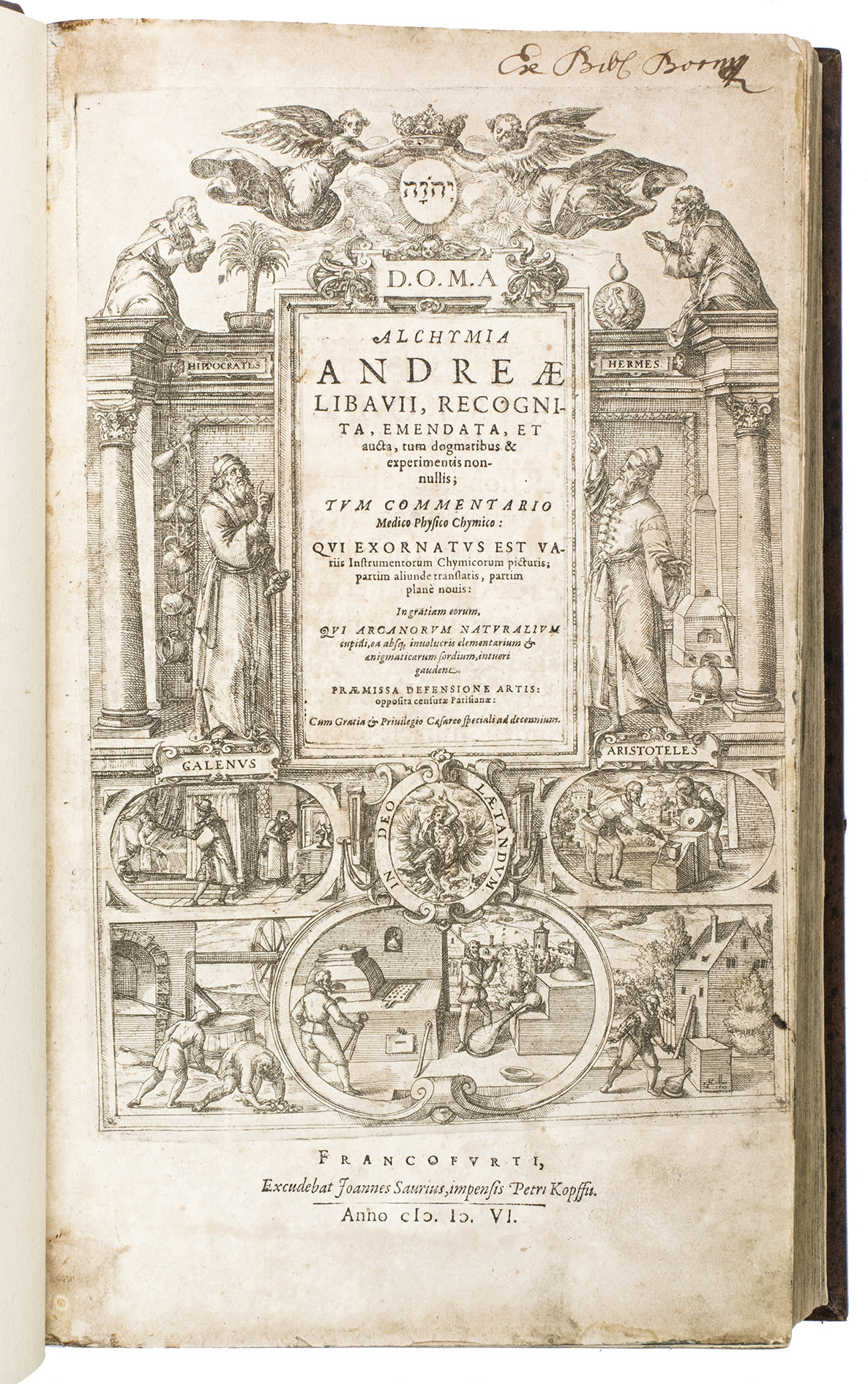LIBAVIUS, Andreas.
D.O.M.A. Alchymia ... recognita, emendata, et aucta, tum dogmatibus & experimentis non-nullis ...
Frankfurt am Main, printed by Johannes Saur for Peter Kopf, "1506" [= 1606]. 3 parts in 1 volume. Folio. With an engraved title page, ca. 200 woodcut illustrations (3 full-page, the others in the text), a woodcut printer's device on the divisional title pages of parts 2 and 3, numerous woodcut head- and tailpieces, and woodcut decorated initials. Modern blind-tooled speckled brown calf. [20], "196" [= 176], [12]; [10], 402; 192, [8] pp.
€ 6,500
Second enlarged edition of the first systematic chemistry textbook, richly illustrated with nearly 200 woodcut illustrations. It was written by Andreas Libavius (ca. 1555-1616), one of the founders of chemical analysis, and is his chief work. As the first edition was not illustrated, the second edition specifically is considered "the greatest and most beautiful of all books on chemistry in the seventeenth century" (DSB). Copies of it rarely appear on the market.
In his writings, Libavius sought to separate out the occult and mystical aspects of alchemy and reclaim it as a proper scientific discipline in its own right, but without rejecting alchemical processes such as the transmutation of metals. In the present work, he divides alchemy in two parts: encheria and chymica. The former is the knowledge of chemical procedures, and includes a description of vessels and furnaces, with numerous illustrations. The latter is the description of substances and their properties. Independent of these are two further divisions of alchemy, namely "ars probandi", the analysis of minerals, metals and mineral waters, and "theoretical alchemy", which concerns the philosophers' stone. The work also discusses alloys and transmutation, and includes recipes for remedies, oil, spirits, acids, distilled waters, alkalis, and salts.
With the bookplate of the Prince of Liechtenstein mounted on the front pastedown, a contemporary ownership annotation ("Ex bibl Boom") in the head margin of the title page. The edges and corners of the boards are slightly scuffed, the front and back are slightly scratched, with some loss of material on the back board. The work is browned throughout, lacking the final blank leaf. Otherwise in good condition. Brüning I, 0882; Duveen, p. 357; Ferguson II, p. 31; Schelenz, p. 406; USTC 2040315; VD17 39:125360T; Wellcome I, 3776; cf. DSB 8, pp. 309-312; Partington II, pp. 244-270.
Related Subjects:













